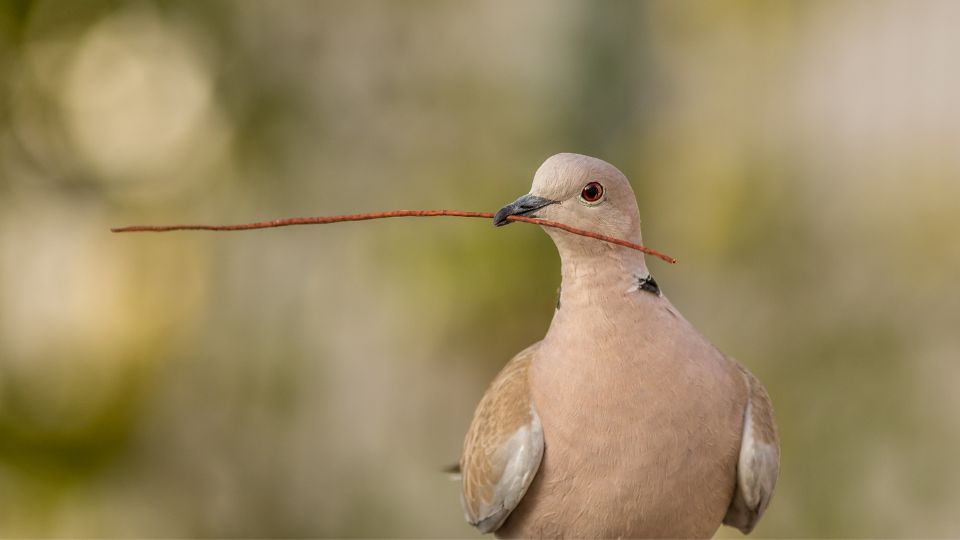Mourning doves eat mainly seeds, grains, and greens with the occasional snail or berry. Up to 99% of their diet is grains, but they enjoy a variety of foods that fall into this category. Commercial feeds meant for doves can be bought online or at most retail stores that carry bird seed.
Store-bought dove food contains various seeds and grains, including sunflower seeds, safflower, millet, milo, wheat, and cracked corn. You can also use small parrot food, which has similar ingredients.
If you have these ingredients, you can make your own supply of dove food. Just make sure you never include seeds and nuts sold for human consumption.
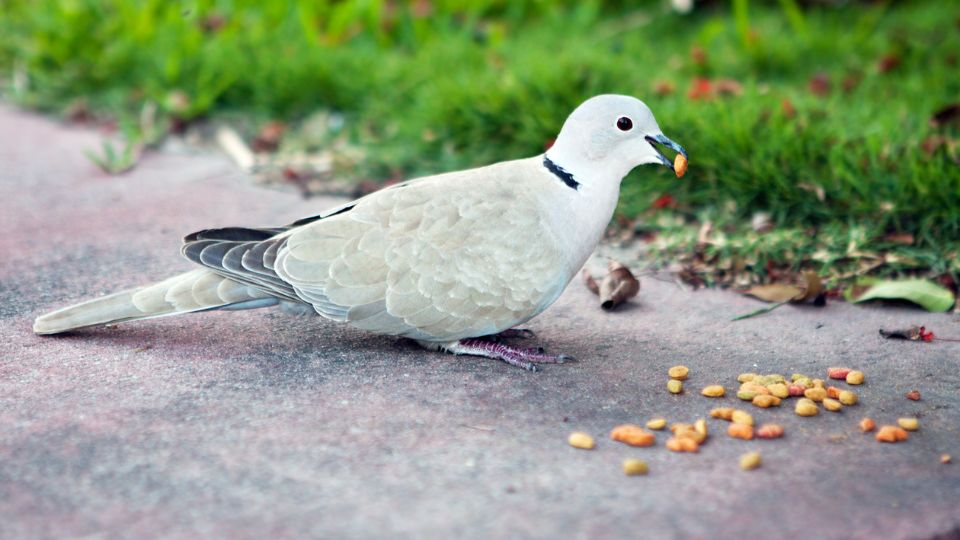
What food attracts mourning doves?
Various grains in a platform or ground bird feeder will attract mourning doves. White millet, grains, ragweed, wild grass, sunflower seeds, safflower, and cracked corn are just a few of their favorite foods.
Make sure your feeders have plenty of room for them to perch. Mourning doves are cautious and skittish. They are most comfortable on wide, stable surfaces that don’t obscure their vision.
You can also scatter food on the ground since doves are ground feeders. Take care to clean up any leftover seeds, so you don’t also attract rodents. Rodents attract predators, many of which also feed on doves. Cleaning bird feeders and removing leftover seeds also helps stop the spread of diseases.
Mourning doves have a very short lifespan in the wild, averaging about 1.5 years. Preventing predators and diseases will keep your backyard guests healthy and increase their life expectancy.
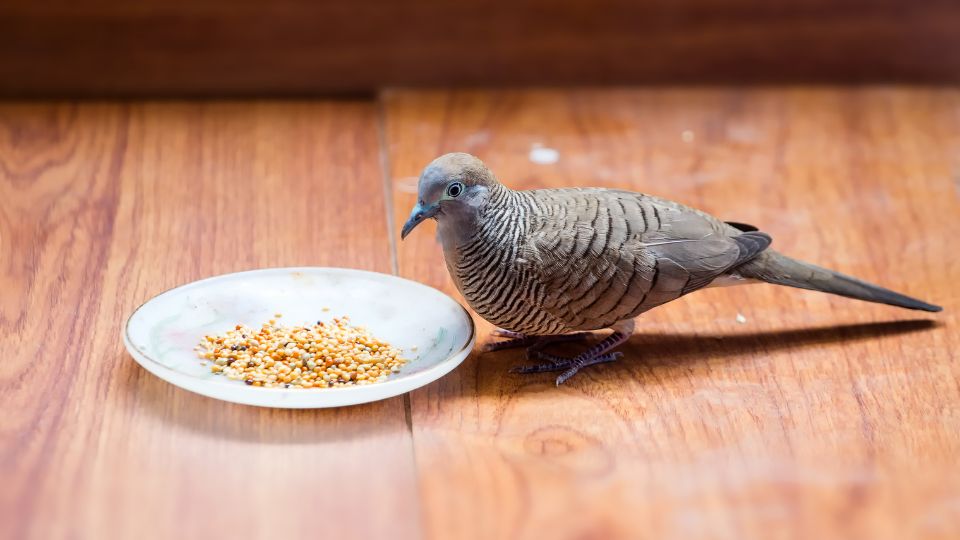
Can you befriend mourning doves?
You can befriend a dove by ensuring plenty of their favorite food is available. Mourning doves can be tamed to eat near you or even directly from your hand.
Mourning doves are intelligent and can recognize familiar humans. They learn quickly and know which houses have the best bird food. Be careful not to overly tame wild doves, as it can make them more vulnerable to predators. Wild birds that are overly dependent on human interaction tend to lose some of their natural instinct over time.
Taming captive mourning doves is entirely different. Since they are housed in predator-proof enclosures and already rely on humans for everything, it is safe to tame them. Hand-raised doves are known to bond very closely with their human caretakers.
Captive or wild, doves do not typically enjoy being petted, but they can learn to trust humans over time.
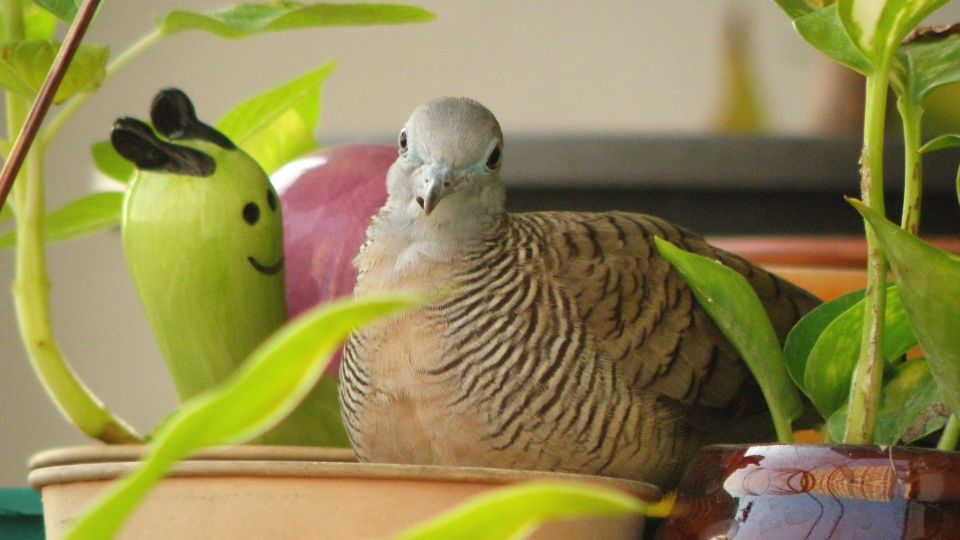
What is a wild mourning dove’s diet?
The wild mourning dove’s diet consists mainly of foraged grasses and weed seeds. The seed of the aptly named Doveweed (Murdannia nudiflora) is a favorite that will keep wild mourning doves returning.
Other grasses and weed seeds that make up the wild mourning dove’s diet include Foxtail, Johnson grass, Barnyard grass, and various weeds that drop seeds.
A flock of mourning doves in the backyard is a great friend to your lawn, eating weed seeds before they can spread further. Sometimes mourning doves eat snails, which are generally harmless and a good source of calcium.
Some snails can carry trichomoniasis, which is a parasitic protozoan disease. The disease causes obstructive growths in the dove’s crop. Baby mourning doves are fed via crop milk, sometimes called pigeon milk. If an adult mourning dove is infected with trichomoniasis, it can kill an entire brood.
Trichomoniasis spreads through songbird flocks as well. The cankers make eating difficult, leading the infected bird to drop uneaten food. If another bird eats the discarded food, it can become infected. Throwing away unused bird seeds and keeping bird feeders clean will prevent spreading diseases.
Keep an eye on birds who appear to be struggling to eat or hold their beaks open. If you find a bird with a white or yellowish growth in its mouth–sometimes called a canker–catch it if you can and contact a permitted rehabber. Trichomoniasis is curable if treated early.
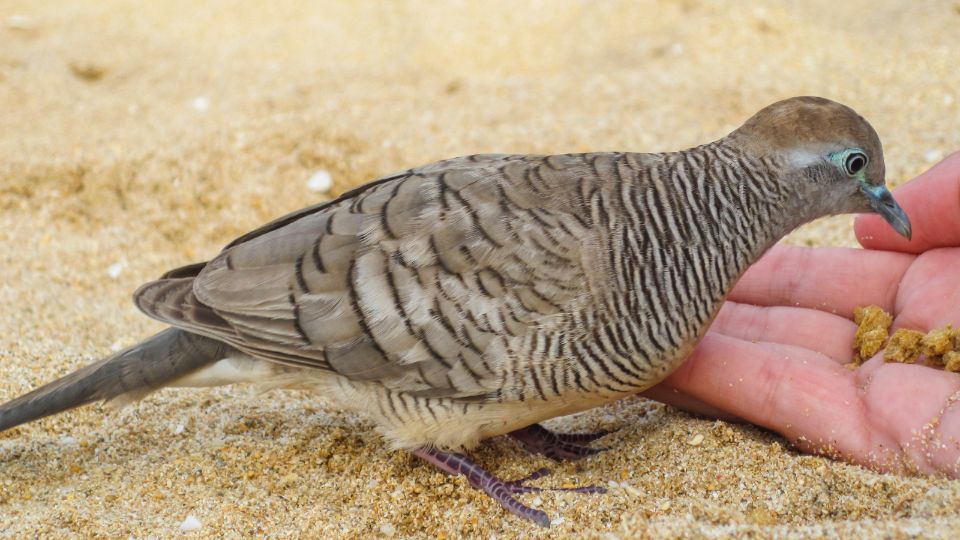
How to tell the difference between a dove and a pigeon
Small birds from the Columbidae bird family are doves, while large birds are called pigeons. Both doves and pigeons are known for the cooing sound they make.
The male mourning dove usually sings the cooing song to entice a female mourning dove to become his mate. The mourning dove (Zenaida macroura) is the most common subspecies of dove in North America. This species is also referred to as the turtle dove, the rain dove, and was once called the Carolina pigeon.
Mourning doves thrive in a variety of North American climates. This common backyard bird is found year-round in the United States, Mexico, and the Caribbean. They can also range into Canada and southern Alaska during the breeding season. During the breeding season, mourning doves can be found in Central America as far south as Panama.
Doves are slim birds and about 12 inches in length. Their body is fawn brown, and their wings are grayish brown. Small black feathers dot both wings, though the pattern is not symmetrical.
Mourning doves have a distinctive black spot at the top of their neck, below each eye.
What is the best way to feed mourning doves?
The best way to feed mourning doves is with a platform feeder or on the ground. Mourning doves do not like tight spaces or feeling trapped. They are clumsy and need a large, stable perch to keep their balance. They prefer a tray feeder or a platform feeder.
Hopper feeders are another option for feeding mourning doves. Doves are also happy to eat fresh, clean bird seed off the ground as well.
Doves do as well in urban areas as they do in the open fields that make up their natural habit. Mourning doves are wary and nervous, so keeping cats and dogs inside and removing anything that might attract predators is important. But despite their flightiness, mourning doves are smart birds that quickly recognize friendly humans.
With suitable feeders and their favorite foods, birders can easily entice mourning doves to join your backyard bird flock. Without threat from predators and plenty of clean, fresh birdseed to enjoy, mourning doves will happily return again and again.

